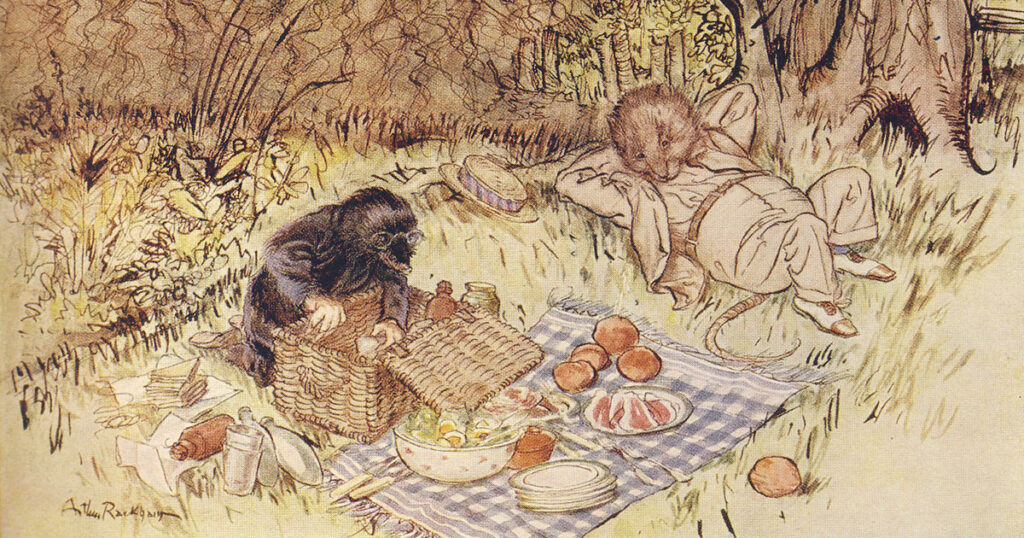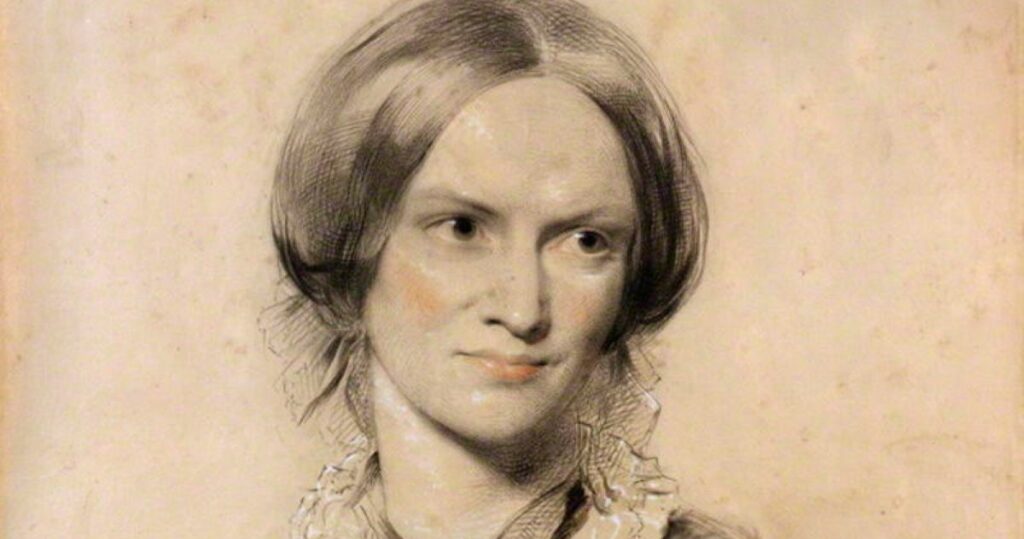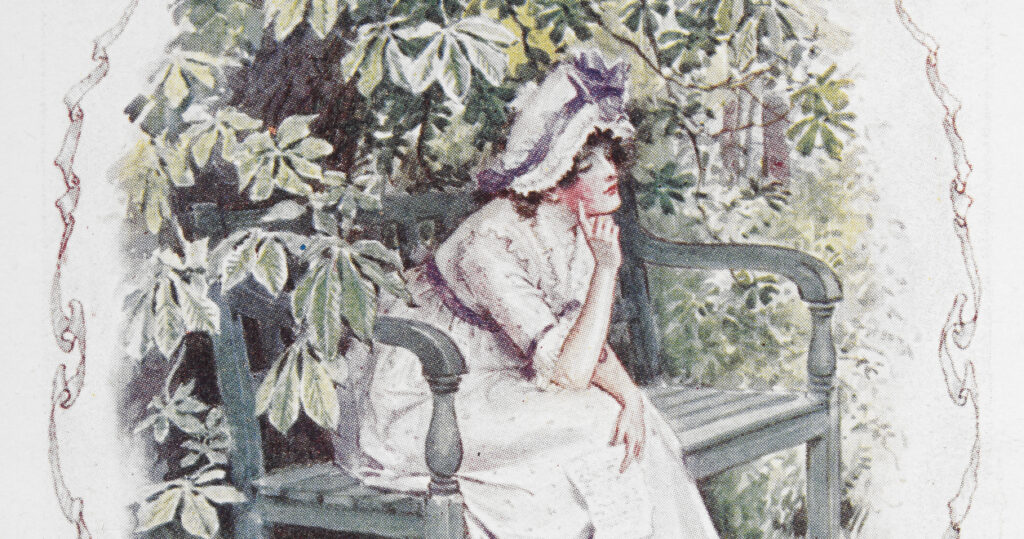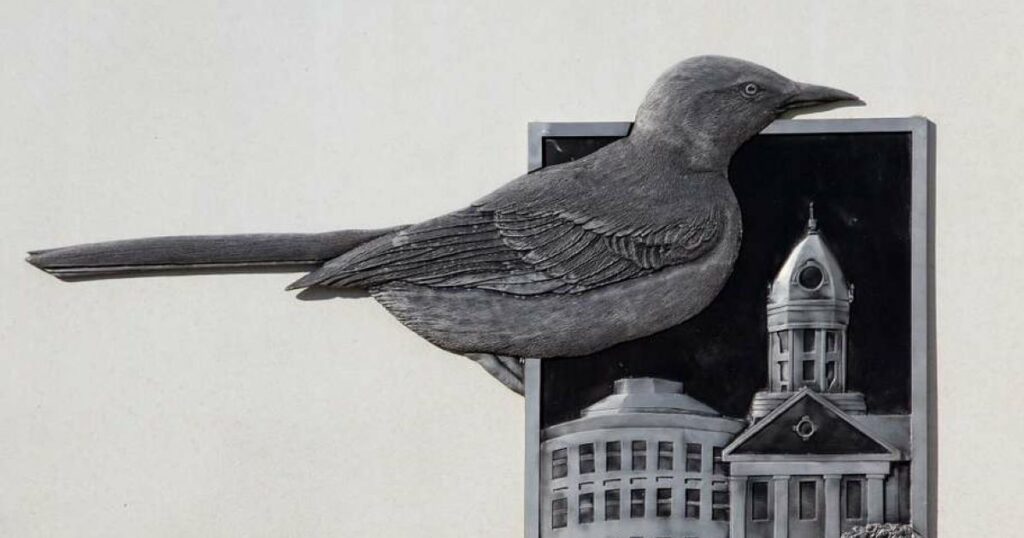A literary reflection by Molly Lackey on Kenneth Grahame's The Wind in the Willows. This is one installment of a monthly series providing reflections on works of literature from a Lutheran perspective.
“One can argue over the merits of most books, and in arguing understand the point of view of one’s opponent. One may even come to the conclusion that possibly he is right after all. One does not argue about The Wind in the Willows. The young man gives it to the girl with whom he is in love, and if she does not like it, asks her to return his letters. The older man tries it on his nephew, and alters his will accordingly. The book is a test of character. We can’t criticize, because it is criticizing us. As I wrote once: It is a Household Book; a book that is read aloud to every new guest and is regarded as the touchstone of his worth.”
—A. A. Milne on The Wind in the Willows
We are all of us busy people. This is especially true for those who have been blessed with children. Not only are the parents busy, but the children are busy too. It is no wonder, then, that all of us have become a bit preoccupied with productivity, performing the most effective task in the shortest duration of time. It’s no wonder, then, that we approach leisure and hobbies with this same sense of urgency. Even our free time must be a means to an end.
You can see this when people go outside, not because God made trees and clouds and birds as embodiments of His divine goodness and beauty, set us people in dominion over them, and declared this situation to be “very good,” but because by “touching grass” they access a biohack that maximizes health. You see this, too, when people read, not because the gift of human language is a dim shadow of the holy Logos, and with it man strives to capture something of the truth, goodness, and beauty God has gifted to us, but instead to “get something out of it” — to quote-snatch, prooftext, or otherwise strip-mine a work of fiction for those nuggets of practical, actionable know-how.
The Wind in the Willows is not a book that lends itself to this kind of reading. That may have something to do with why it’s a book revered and referenced by many, from authors like J. R. R. Tolkien, C. S. Lewis, and A. A. Milne, to U.S. President Theodore Roosevelt. For a work of such universal acclaim, it’s a book that defies easy description: It is best understood, perhaps, as a portrait of a small cast of anthropomorphic animals, Mole, Rat, Badger, and, of course, Toad. The main thread of the plot — a plot which is frequently abandoned for side stories — deals with the flighty Toad’s consuming obsession with motorcars, the troubles this brings him, and his friends’ attempts to put him back on the straight and narrow.
Toad serves as the most comic single character in a work that is laugh-out-loud funny for most of its pages, especially in the many songs that Grahame wrote in the work. The novel is drawn from bedtime stories that the author told to his young son, which accounts for its loose structure and dream-like quality. This may be a challenge for readers who are used to the kinds of tight plotlines that have taken over popular media, which makes no allowances for indulgent wordsmithery or “loose ends.” This kind of storytelling, however, is perfect for children — and adults looking to regain some sense of the simplicity of childhood — as it requires a sort of restfulness and a pure enjoyment in the characters and their antics, without a concern for whether this is building to a climax or contributing to a truly satisfactory conclusion that answers all of our questions.
Many of the chapters in The Wind in the Willows are not necessary for the core plot but are often considered the backbone of what makes the book so special. “Dulce Domum” (Latin for “Sweet Home”) is one such chapter. In this chapter, the good Mole learns to value his home, unfashionable as it may be. The chapter ends with the sleepy Mole reflecting:
He saw clearly how plain and simple — how narrow, even — it all was; but how clearly, too, how much it all meant to him, and the special value of some such anchorage in one’s existence … [I]t was good to think he had this to come back to, this place which was all his own, these things which were so glad to see him again and could always be counted upon for the same simple welcome.
When the days of winter run short and, shut inside, familiarity sadly breeds contempt, this chapter is the perfect meditation on the gift of a home for adult and child alike.
But what, specifically, does The Wind in the Willows offer for the Christian reader? Life so often forces us into patterns of efficiency that can erode at our spirit. The means-to-an-end mentality may work when you are figuring out your department’s or household’s budget, but it isn’t helpful to view all of life — most especially the life of the church — through such a lens. Experiencing that wonderful feeling of absolute self-abandonment that one achieves through becoming lost in contemplation of a book, a song, a poem, a painting, a flower, is no substitute for prayer or Bible reading or coming into the Divine Service to receive Christ’s gifts. But it is good practice, and these things are all good gifts that God has given us to enjoy. We do experience a facet of our Creator’s love when we take the half hour to watch the pinky dusk light trace the outlines of early spring leaves. We feel more keenly the astonishing gift of language — and of laughter — when we read sentences like
To his horror he recollected that he had left both coat and waistcoat behind him in his cell, and with them his pocket-book, money, keys, watch, matches, pencil-case — all that makes life worth living, all that distinguishes the many-pocketed animal, the lord of creation, from the inferior one-pocketed or no-pocketed productions that hop or trip about permissively, unequipped for the real contest.
We understand more dearly the ways God works through the turning of the seasons, the love of family, the attention of friends, the sharing of a good meal, the reading aloud of a wonderful book. And when we learn to pay that close of attention to these created gifts, how much more joy will we find in attending to the gifts of Word and Sacrament, and to the Giver Himself.
Cover image: “The Mole begged as a favour to be allowed to unpack it all by himself; and the Rat was very pleased to indulge him,” by Arthur Rackham, 1940.






Molly,
How delightful to see an article by you of one of my favorite books! My children and I spent hours hearing the story and then devouring Rackham’s delicious illustrations.
Thank you!